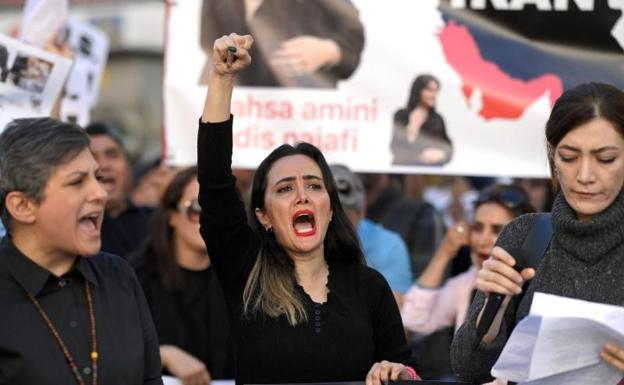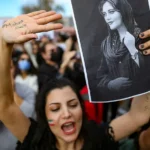Kurds and Baluchis join riots that leave dozens dead on the border with Pakistan, including a commander of the Revolutionary Guard
The Tehran authorities take a step in their measures to quell the riots and warn that “riots offer terrorists the best opportunity to wreak havoc in Iran,” in the words of government spokesman Ali Bahadori Jahromi. After a week marked by attacks with suicide missiles and drones against the strongholds of Iranian Kurdish groups in northern Iraq, which left at least thirteen dead, violence broke out in Sistan-Baluchistan.
After a Friday of serious mobilizations in this province in the southwest of the country, the Government reported the death of nineteen people, including Hamid-Reza Hashemi, commander of the Revolutionary Guard, and three other important members of this all-powerful paramilitary group in the republic. islamic Baloch activist groups raised the death toll to 58.
Jahroni explained that “some rioters, affiliated with terrorist and separatist groups, who are well known to the security forces, hid among the faithful during Friday’s sermon and after prayers attacked security centers.” The streets of Zahedán, capital of the province, became a battlefield with clashes that have little to do with the images that arrive daily from other cities in the country where there are riots, but not armed clashes.
Sistan-Baluchistan is on the border with Pakistan and is a province with a Sunni majority in a country ruled by Shiism. The Jaish al-Adl group (name in Arabic meaning ‘Army of Justice’) has been active in this part of the border since 2012, a radical Sunni group that for seven years has been challenging the Tehran authorities with attacks and kidnappings. Jaish al-Adl took over from Jondolá (God’s Army) eleven years ago at the head of the insurgency of the Baluchi minority and in 2019 carried out its bloodiest action when it ended the lives of forty members of the Revolutionary Guard in a suicide attack against the bus in which they were traveling.
The authorities of the Islamic Republic are currently looking with particular concern at the instability that exists on its borders, where armed militias from the Kurdish, Baluchi and Arab minorities have been threatening the Government for decades and are now joining the mobilizations for the death of the young woman. Mahsa Amini at the hands of the morality police on September 16.
After two weeks of protests that have spread to the 31 provinces of the country, the silence of the Supreme Leader, Ali Khamenei, is striking. In the absence of his words on the situation, Hezbollah leader Hassan Nasrallah spoke, offering a speech in support of the Islamic republic. “The death of an Iranian woman in a situation that is not clear has been used by the West to get involved, but Iran is too strong to be shaken by this type of event,” said the Lebanese cleric.
Internet Cut
In addition to the repression in the streets and the cutting off of the Internet to complicate communication and information abroad, the Tehran regime complied with the threat to arrest the public figures who have shown their support for the mobilizations. Among the figures placed under arrest in the last few hours are footballers such as Hossein Mahini, a former Persepolis player, the singer Shervin Hajipour, author of ‘For…’, a song that reached 34 million views in just 48 hours, the poet Sara Borzuei or the journalist Elaheh Mohammadi, whose crime was covering Amini’s funeral in the town of Saqqez, in Kurdistan.
The protests do not stop, but they lack leadership. Mir Husein Mousavi, former prime minister and one of the leaders of the so-called ‘green revolution’ of 2009, broke his silence. Mousavi addressed a letter to the Armed Forces asking them to join the nation and not the oppressors and remind them that his duty is to “protect the people, not fight them.”


